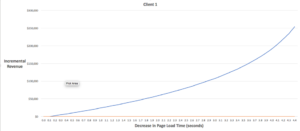Increase Revenue Contribution from Google Ads with Qualified Audiences for Remarketing
Many people around the Boston area have spent the last few months basking in the glory of a World Series Championship that the Red Sox brought home after a hard fought 4-1 victory over the Los Angeles Dodgers.
Here at GCommerce, we’ve been evaluating the results of some experimental paid search campaigns that we ran along with The Lenox Hotel to increase the awareness that the hotel is within walking distance of Fenway Park. Not only is this an incredible boutique hotel in the Back Bay of Boston, it’s also the best hotel to stay at if you’re in town for a Red Sox Game.
It was our job at GCommerce job to come up with a strategy that would most efficiently target their intended audience. The Lenox Hotel had pages on their site dedicated to content around Red Sox Game’s and the close proximity to Fenway Park. We decided to use Remarketing Lists for Search Ads in order to best reach our target audience.
For those not familiar with Remarketing, do you ever look at a product or service online, and then it seems like ads for that product or service follow you around forever? That is Remarketing.
The basic idea is that someone will come to your website, you drop a pixel on their browser that then feeds that individual ads about the page that they looked at. While this is a great tool for marketers to capture users, it generally misses out on 2 main topics
- Just because someone came to your site, how do we know what type of content they are looking for?
- Just because they visited a certain page, how do we know they didn’t “accidentally” click to get to your page or site?
Both of these things kind of go together. Have you ever accidentally clicked on an ad or link? Just because someone ends up on a page of our site, does not mean they intended to be there.
With Google Tag Manager, we can put qualifications around our audiences to help eliminate those that came to our site without the intent of reading content. The way we do this is with 3 different steps or qualifications for a user to enter our “audience list” that we then serve ads to:
- A user must first visit on one of the Red Sox or Fenway Park pages in order to be qualified for this audience list.
- Next, the user must scroll at least 25% of the way down the page. If you look at most pages on the Lenox Hotel’s website, they have a very efficient head navigation and absolutely beautiful imagery. With both of those elements in place, we can gather a better idea about intent if we can measure someone’s scroll depth while also eliminating those that “accidentally” ended up on the page.

- Next, the user also had to look at booking dates between June and Sep 30th (we later extended the date range as the Red Sox made their way through the playoffs).

- Finally, if a user was qualified in all of these areas, they were also eliminated from the list if they ever hit the “confirmation” page to signal a booking was completed.
Last year, we ran a very similar campaign effort, however, our Remarketing Audience List only consisted of people coming to the Lenox Hotel’s website, and it did not include these further qualifications. Luckily, this gives us a really good baseline to compare it to.
So how did this these qualified audience paid search campaigns perform in comparison to last year’s remarketing campaigns?**
Our remarketing lists for paid search ads in 2018 brought in 178% more Transactions as measured through the attribution on Search Ads 360 (12.5 vs 4.5):

This advanced remarketing list for search campaign was a great test and discovery for us here at GCommerce. We plan to take use this data for future success in remarketing campaigns for The Lenox Hotel and our other Paid Search clients.
Contact us today to discuss how Remarketing Lists for Search Ads can help your hotel!
**Full disclosure, the Red Sox were eliminated from the 2017 AL Division Series against Houston and their final home game was October 9, 2017. In the 2018 season, their final game at Fenway was October 24th, so there were an extra 15 days that the campaign ran in 2018 vs 2017.


















